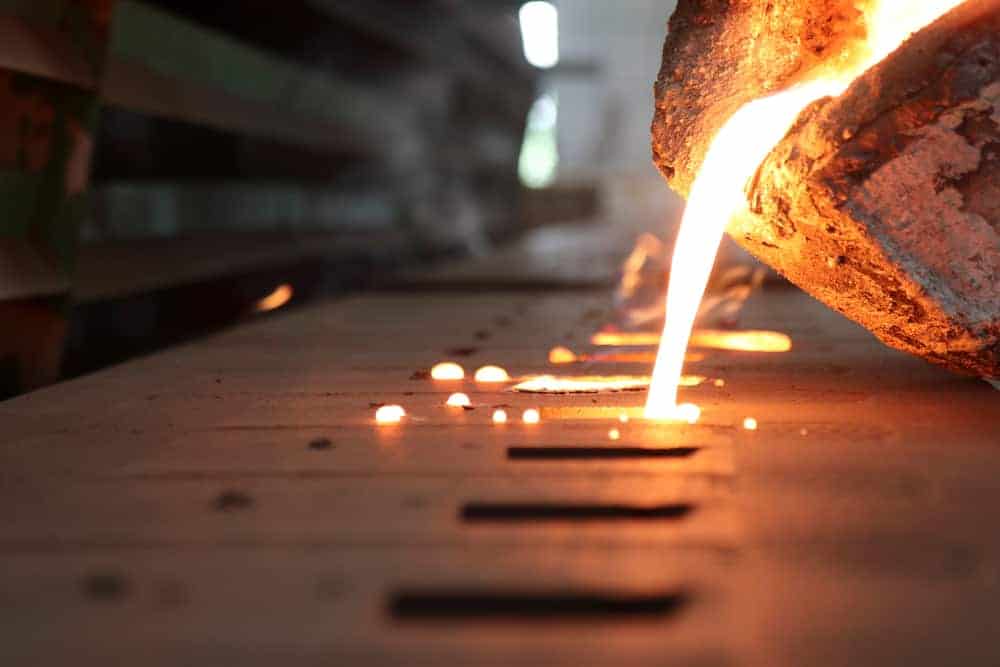Using Nondestructive Testing in Metallurgy

When it comes to evaluating the quality, performance, and failure risk of metallurgical components, industries have relied heavily upon non-destructive testing (NDT) methods such as eddy current and ultrasonic testing. Metallurgy is used as a way to modify the physical and chemical properties of metal to meet industry-specific standards. To achieve this, metallurgical components are exposed to a heat-treatment process, causing them to be prone to flaws such as surface cracks, corrosion, and discontinuities. With eddy current testing (ECT) and ultrasonic testing (UT), these flaws can be detected before components are placed in use.
The Need for Non-Destructive Testing in Metallurgy
Metallurgy is utilized in parts manufacturing for fabricating a wide range of metallic components to meet the specifications in industries including automotive, aerospace, and oil and gas. Because the production of metallurgical components includes heat treatment or annealing processes, they are often prone to irregularities and flaws that can be difficult to inspect manually.
Manufacturers need to be able to ensure the quality and integrity of these metallurgical components before they leave the facility. For quality control, manufacturers rely on non-destructive testing.
In order to detect flaws such as porosity, cracks, corrosions, or inclusions, technicians can leverage advanced eddy current and ultrasonic non-destructive testing technologies. These methods provide the detection necessary for manufacturers to ensure component safety, quality, and integrity.
Eddy Current Testing for Metallurgical Flaw Detection
Eddy current testing is an effective method for detecting material hardness and depth and the presence of cracks and other irregularities in a metallurgical component. ECT uses an electric coil for inducing a magnetic field in the metal component to be tested and monitors the current flow. Any change in the current flow is an indication of irregularities in the metal.
Advanced eddy current probes can easily identify if the material has been properly heat-treated. Manufacturers can quickly and easily identify these flaws with the help of advanced ECT probes and equipment without causing any damage to the metal part. They can also reduce downtime and improve productivity with eddy current testing by identifying and preventing defective pieces that may degrade the quality of the product or put human lives at risk.
Phased Array Ultrasonic Testing for Metallurgical Flaw Detection
Similar to eddy current, the ultrasonic testing method is also an effective method in identifying different types of flaws such as corrosion, cracks, porosity, and inclusions in the metal. Advanced UT—phased array ultrasonic testing (PAUT)—utilizes high-frequency ultrasonic pulses emitted from the transducer for volumetric testing. The ultrasonic waves transmitted back from the metal component can be analyzed to identify any change in material thickness, density, or height. This indication can be ideal in determining the type of flaw as well as its location and magnitude.
The complex geometries of many metallurgical components can also present an inspection challenge. Odd angles and fastened connections often leave space for flaws to form. Conducting PAUT with a portable scanner and specific probes can be an ideal solution for complex geometries as it allows technicians to create accurate scans quickly and efficiently.
Reducing Risk with Metallurgical Testing
Utilizing advanced ECT and PAUT probes for non-destructive testing allows industries to identify metallurgical flaws in the early stage of production, assisting industries in minimizing potential economic risks.
Non-destructive testing assesses the quality and safety specifications of the metallurgy component by identifying if any flaws resulted from heat treatment or annealing. With advanced PAUT and ECT products, manufacturers can easily detect deviations in material thickness and density. This allows technicians to analyze for the presence of flaws in the heat-treated metal. Identification of these flaws allows industries to optimize their process so as to improve the quality and safety of the product, while also increasing their productivity and maintaining cost-effectiveness.
Zetec is a leader in high-performance eddy current and phased array ultrasonic testing solutions for non-destructive testing metallurgy, helping clients ensure asset integrity and product quality. Contact us today to learn how Zetec delivers solutions to optimize your productivity, safety, and cost of ownership goals.





